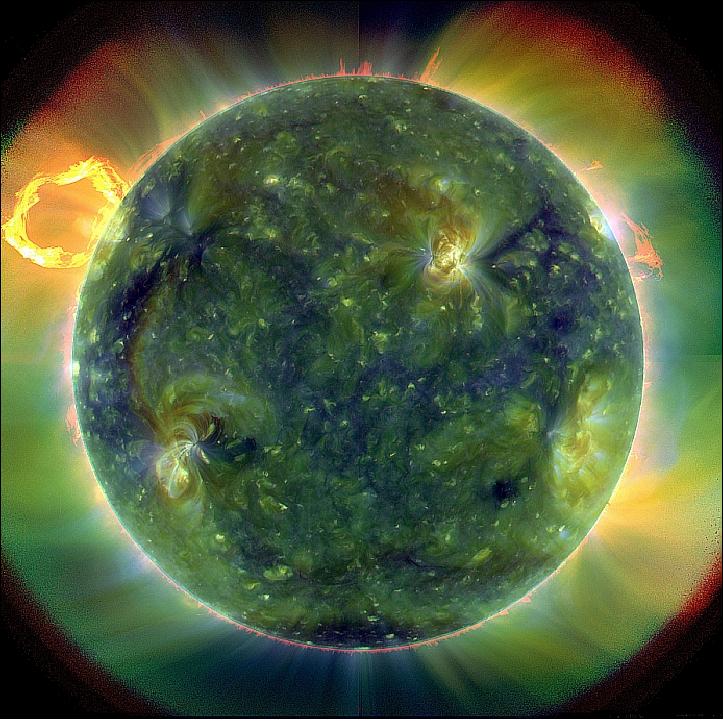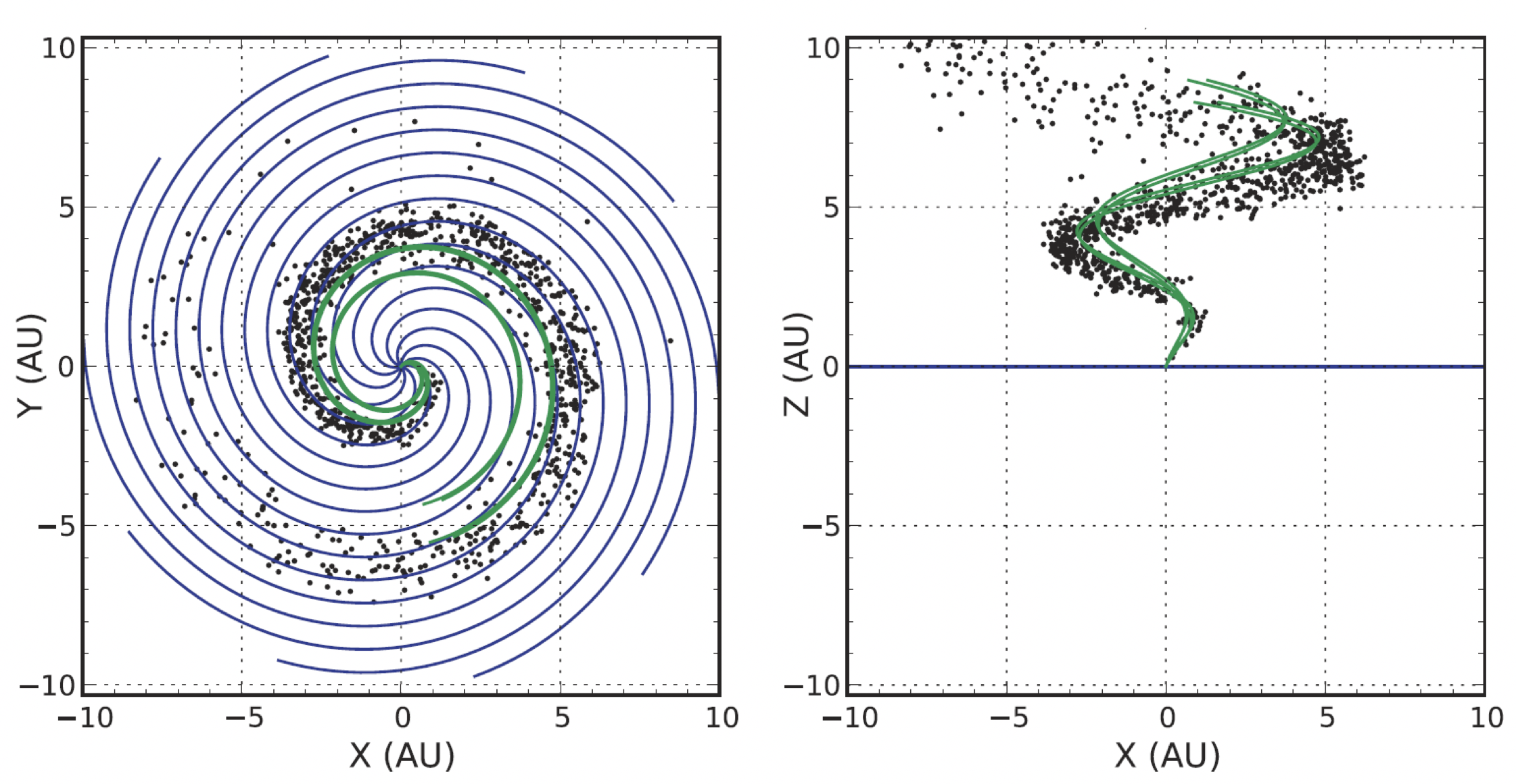Solar Energetic Particles
Solar flares are observed as transient bursts of electromagnetic radiation from the Sun. They often occur in conjunction with Coronal Mass Ejections (CMEs). During flares and CMEs, ions and electrons are accelerated to high energies. They can escape from the Sun and propagate through space to reach regions near Earth. We can detect fluxes of these Solar Energetic Particles (SEPs) using instruments on board spacecraft. My research aims to understand the processes of SEP acceleration and propagation. I investigate this problem from a modelling point of view, and also work on the analysis of experimental data.

Modelling SEP propagation
Many questions regarding the propagation of SEPs from the Sun to regions near Earth remain unsolved, mainly due to the complexity of modelling particle transport in the turbulent solar wind magnetic fields.
Working with post-docs and PhD students in my group, I have pioneered the application of full-orbit test particle simulations to the problem of SEP propagation. Using a Fokker-Planck approach, the role of magnetic field line meandering has also been studied. Some of the key results of this work are as follows:
- drifts associated with gradient and curvature of the Parker spiral are important for SEP propagation (see Marsh et al 2013, Dalla et al 2013)
- the Heliospheric Current Sheet (HCS) allows SEPs to propagate effectively in longitude and latitude via HCS drift (see Battarbee et al 2018, Dalla et al 2020)
- magnetic field line meandering caused by turbulence in the interplanetary magnetic field helps particles to reach locations far apart in longitude (see Laitinen et al 2016, Laitinen et al 2018)
Please refer to the Publications section for additional details.

(Image from Marsh et al 2013)
Space Weather
SEPs are an important component of space weather because they pose a radiation risk to astronauts and to satellite instrumentation.
We are developing SEP space weather forecasting models that make use of the latest understanding in SEP physics. As part of our Space Weather activities we are working on: